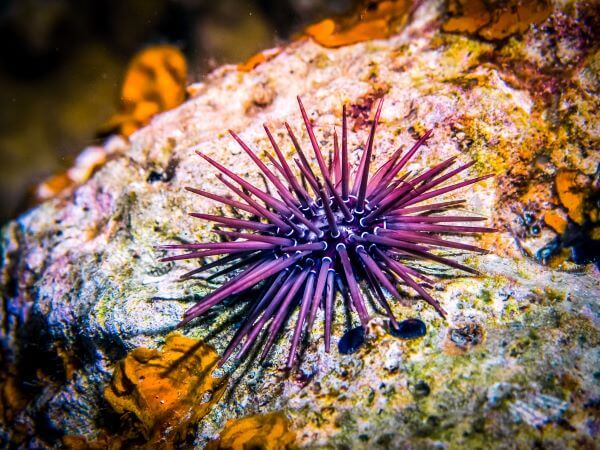In Biology, symmetry refers to the arrangement of body parts of an organism around a central point or axis. The two main types of symmetry are radial symmetry (in which body parts are arranged around a central axis) and bilateral symmetry (in which organisms can be divided into two near-identical halves along a single plane). A few organisms display asymmetry, meaning they have no body plane symmetry at all.

Radial Symmetry |
Bilateral Symmetry |
| Similar body parts are arranged around a central axis | Similar body parts are arranged on either side of the sagittal axis |
| Organisms have a top and bottom but no left or right sides | Organisms have front and back, head and tail, and left and right sides |
| Organisms are typically sedentary or slow-moving | Organisms typically have a wide range of movement |
| Organisms can be divided into near-identical halves when a plane is passed at any angle through the central axis | Organisms’ can only be divided into near-identical halves along a single plane (the sagittal plane) |
| Organisms usually don’t have a head at the front of the body | Organisms have a distinct head at the front of the body |
What is Radial Symmetry?
Radially symmetrical organisms have similar body parts arranged around a central axis. They have top and bottom surfaces, but not left or right sides. Organisms that display radial symmetry can be divided into two near-identical halves when a plane is passed at any angle through their central axis.
Animals that exhibit radial symmetry are typically cylindrical with their body parts arranged along or radiating out from the central axis. The top and bottom halves of such organisms may be described as the oral side (the side with a mouth) and the aboral side (the side with no mouth).

Examples of Radial Symmetry
There are relatively few examples of radial symmetry in the animal kingdom. Animals that display radial symmetry usually belong to the phyla Ctenophora or Cnidaria.
Ctenophora is a phylum of invertebrate animals more commonly known as the comb jellies. They are characterized by rows of cilia (called ‘combs’) which they use for swimming. Comb jellies are the largest known animals to use cilia for motility and can range in size from around 1 mm (0.4 inches) to 1.5 m (4 ft 11 in).

The phylum Cnidaria includes other jellyfish, corals, and sea anemones, all of which are radially symmetrical. Other examples of animals that display radial symmetry include sea urchins and sea cucumbers, both of which belong to the phylum Echinoderm. Outside of the animal kingdom, many flowers also exhibit radial symmetry.
Radially symmetrical organisms are often sedentary or slow-moving creatures. Their radial symmetry allows them to sense their surroundings from all directions without requiring them to move too much.
What is Bilateral Symmetry?
Bilateral symmetry is seen in organisms that can be divided into two separate halves along the sagittal plane. The sagittal plane divides the body into two near-identical halves and runs through the midline of the body from front to back.
Animals that display bilateral symmetry have front and back (dorsal and ventral), head and tail (anterior and posterior), and left and right sides. Bilaterally symmetrical animals are far more mobile than radially symmetrical organisms, allowing for more complex interactions with their environment and other organisms.

Examples of Bilateral Symmetry
Bilateral symmetry is the most common form of symmetry and can be seen throughout the Animal Kingdom. Any organism with a distinct left and right, front and back, and head and tail/bottom displays bilateral symmetry.
Examples of animals that display bilateral symmetry include humans and other vertebrates, insects, spiders, crustaceans, snails, spiders, octopi, sea stars, clams, flatworms, common worms, and the larval stage of sea urchins.

Asymmetrical Animals
Asymmetrical organisms are those with no body pattern symmetry. Asymmetry is rare in the Animal Kingdom and is typically only seen among sponges (which belong to the phylum Porifera). Another example of asymmetry can be seen in flounders, a fish species with both of its eyes on one side of its head. However, this asymmetry only develops when the fish reach adulthood, as their larval form is bilaterally symmetrical.

